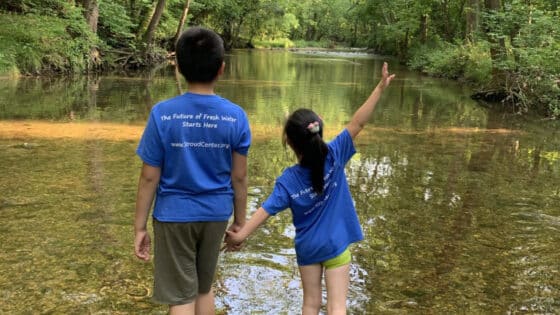Ouellet V., M.D. Daniels, M. Peipoch, L. Zgleszewski, N. Watson, E. Gibson, S. Krause, and J. Kan. 2022. Ecohydrology 15(2): e2380
Abstract
Microbial community composition varies across stream habitats. However, there is little understanding of how varying hydraulic and geomorphic factors influence microbial distribution along a succession of pools. This study examines how substrate, geomorphological and hydraulic habitat variables may drive bacterial community composition within different stream pool habitats of a temperate headwater stream. Microbial community structures from rock biofilm and sediment samples within each of the ten selected stream pools of White Clay Creek, PA, were determined by high-throughput sequencing of 16S rRNA genes. The grain size distribution, organic matter content, streamflow velocity, temperature regime, and morphology of each pool were quantified to characterize the pool habitats’ variability. Multivariate statistical analysis revealed significant differences in the microbial community composition linked to the substrate’s stability within the pool units. Indeed, soft and more mobile sediments were dominated by heterotrophic bacteria, while photosynthetic microorganisms (e.g., microalgae and cyanobacteria) were mainly found on rock biofilm. The difference in the distribution of bacterial communities can be explained by variations in the local hydraulic (i.e., depth and velocity) and the thermal conditions (daily fluctuation, min and max). These results highlight the geomorphological and hydrologic drivers for small-scale diversity in bacterial communities and provide a better understanding of how maintaining and promoting variability in streambed physical properties may enhance microbial diversity. Better integration of these drivers into stream restoration practices will allow the inclusion of microorganisms, the trophic levels that are usually overlooked but still play critical roles in stream ecology.
Click here to request a copy of the publication.
Funding information: Fonds de Recherche du Québec – Nature et Technologies; Endowment Fund from Stroud Water Research Center; National Fish and Wildlife Foundation, Grant/Award Number: 43759; National Science Foundation, Grant/Award Numbers: DEB-1120717, DEB-1557063, EAR-12632223.


